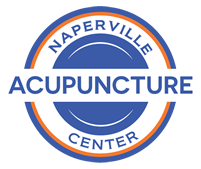Carpal tunnel syndrome (CTS) is a type of neuropathy caused by compression of the median nerve. The median nerve travels from the forearm through the wrist’s carpal tunnel into the thumb, index, middle, and half of the ring finger, and these are the areas where symptoms will usually be present. Symptoms of carpal tunnel syndrome include pain, numbness, and paresthesias (tingling or burning).
Causes And Pathology
The carpal tunnel (CT) is the space between the transverse carpal ligament (flexor retinaculum) above and the carpal bones below. This is a crowded space, containing the median nerve as well as nine flexor tendons. Carpal tunnel syndrome results when there is an increase in pressure in the carpal tunnel, which compresses the median nerve. This most commonly results from repetitive wrist movements such as typing.
Obstruction of the circulation to the nerve eventually results in damage. The myelin sheath and axons develop lesions, and the surrounding connective tissues become inflamed. This compounds the problem because as the tendons become inflamed they also compress the nerve.
Signs And Symptoms
CTS usually has a slow onset with tingling and numbness in the hand. Initially, the pain may be alleviated by shaking the hand. Over time, the symptoms may become constant.
Pain may also radiate up the affected arm even into the upper extremity, shoulder and neck. As it progresses, the patient may experience pain at night, hand weakness, decreased grip strength, clumsiness, reduced wrist mobility and even thenar atrophy (loss of muscle mass at the base of the the thumb.

Diagnosis
The physical exam includes the Phalen’s and reverse Phalen’s test. These tests place the wrists in full flexion or extension, respectively. They pressurize the median nerve and will reproduce the symptoms if carpal tunnel is present. Another simple test is the Tinel’s, or tapping test. Tapping on the carpal tunnel may reproduce the symptoms.
If these tests are positive, it is likely but not certain, carpal tunnel syndrome is present. Electromyography and nerve conduction studies can be done to confirm the diagnosis.
Differential Diagnosis
There are several other conditions which will create symptoms similar to carpal tunnel syndrome. These include pronator teres syndrome, cervicobrachial syndrome, and other median nerve entrapment syndromes.
Conventional Treatment
Conservative treatment may include such things as orthosis (braces), which limits wrist motion. These may be worn mostly at night. Additionally, patients should be educated on how to modify daily activities and avoid positions that cause increased compression of the nerve. Things such as desk and keyboard height should be evaluated. Medication including NSAIDS or oral steroids may be used. The physician may also opt to use a corticosteroid injection. Exercise and mobilization techniques may be given by a physical therapist.
Surgical treatment of carpal tunnel syndrome involves open or endoscopic surgery, in which the transverse ligament is cut, creating space in the carpal tunnel and reducing pressure on the median nerve.
Acupuncture Treatment
The acupuncture treatment begins with an assessment not only of the wrist and hand, but also the neck and shoulder. Muscle length, strength, and joint motion are assessed. Motor points from muscles including the pronator teres, flexor carpi ulnaris, palmaris longus, abductor pollicis brevis, and opponens pollicis are stimulated to improve their function and reduce tension on the elbow. Additional points in the shoulder girdle and neck may be selected to improve overall motion and circulation in the arm. Electrical stimulation may be done to the flexor retinaculum, which forms the roof of the carpal tunnel. Tui Na (Traditional Chinese Medicine massage) techniques may also be included, as well as sports taping. Finally, dietary and exercise suggestions may be offered.
For most cases, acupuncture treatments are effective at reducing pain and increasing function. Depending on how severe and chronic the case is, it may reach maximum improvement in anywhere from 4-10 visits. If there is no improvement, referral to a physician for further evaluation will be made.
Sources
Vizniak, Nikita. Conditions Manual. Professional Health Systems, Inc., 2010
Hertlin, Darlene, and Kessler, Randolph. Management of Common Musculoskeletal Disorders, Physical Therapy Principles and Methods 3rd Edition, Philadelphia, Lippincott, 1996
Reaves, Whitfield with Bong, Chad. The Acupuncture Handbook of Sports Injuries and Pain, A Four Step Approach to Treatment, Boulder, CO, Hidden Needle Press 2009
Callison, Matt. Sports Medicine Acupuncture: An Integrated Approach Combining Sports Medicine And Traditional Chinese Medicine, San Diego, AcuSport Education 2019
This information is for educational purposes only and is not intended to replace the advice of your doctor. Naperville Acupuncture Center disclaims any liability for the decisions you make based on this information.The information contained on this website does not establish, nor does it imply, doctor-patient relationship. Naperville Acupuncture Center does not offer this information for diagnostic purposes. A diagnosis must be provided by a licensed physician and is not assumed based on the information provided.
